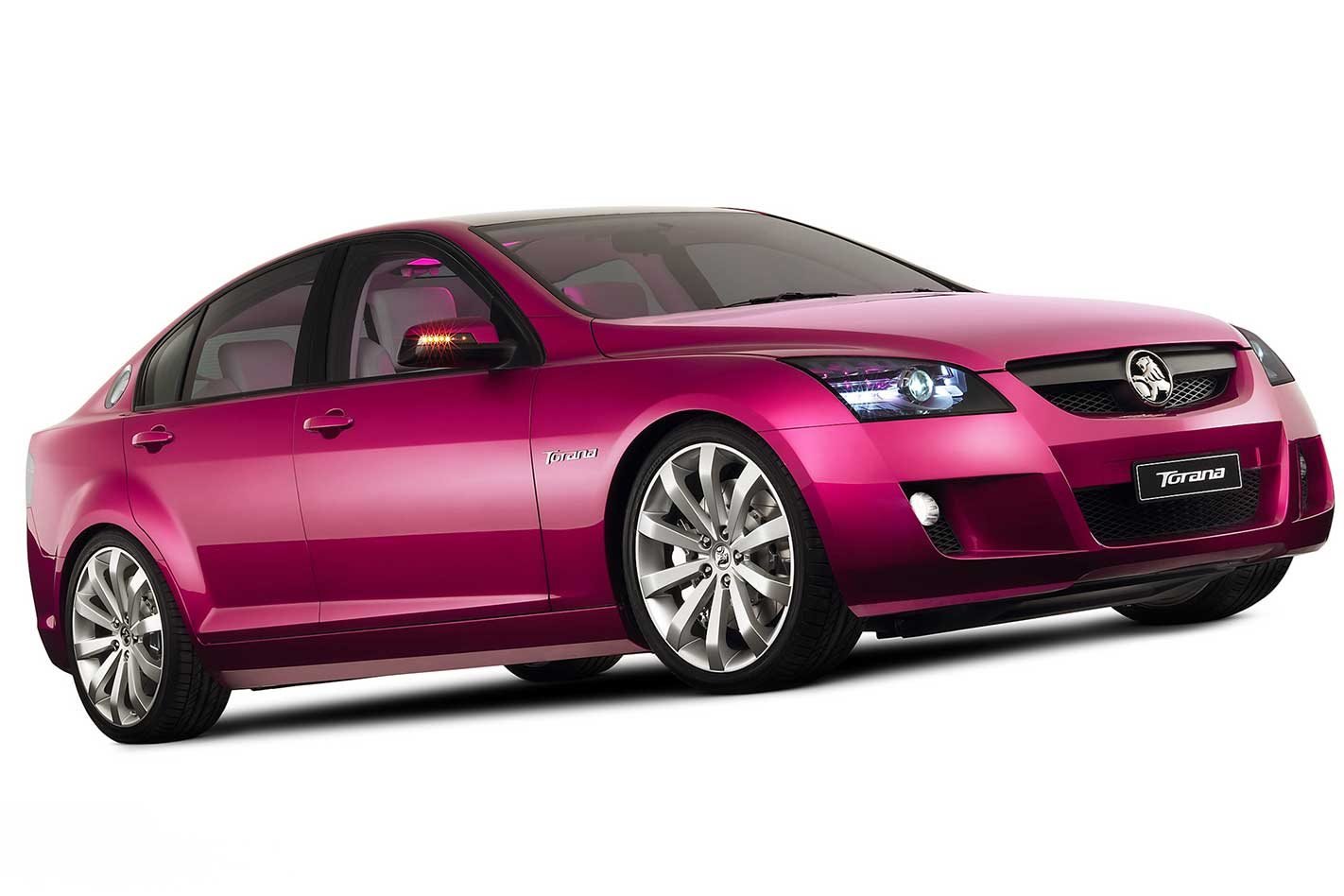Twenty-three-year-old Ewan Kingsbury was thrown in at the deep end. He was off the plane from his native Pomgolia for just a week before being handed Holden’s midsize concept car, then called XP54, and now known around the world as Torana TT36.
This feature was originally published in MOTOR’s December 2004 issue
The XP54 – it combines Experimental Prototype and Holden’s Studio 54 design centre – was not a clean sheet for Kingsbury. The concept might have been green-lighted by GM global product supremo Bob Lutz five months before the Sydney motor show, but it actually dates back further than that.
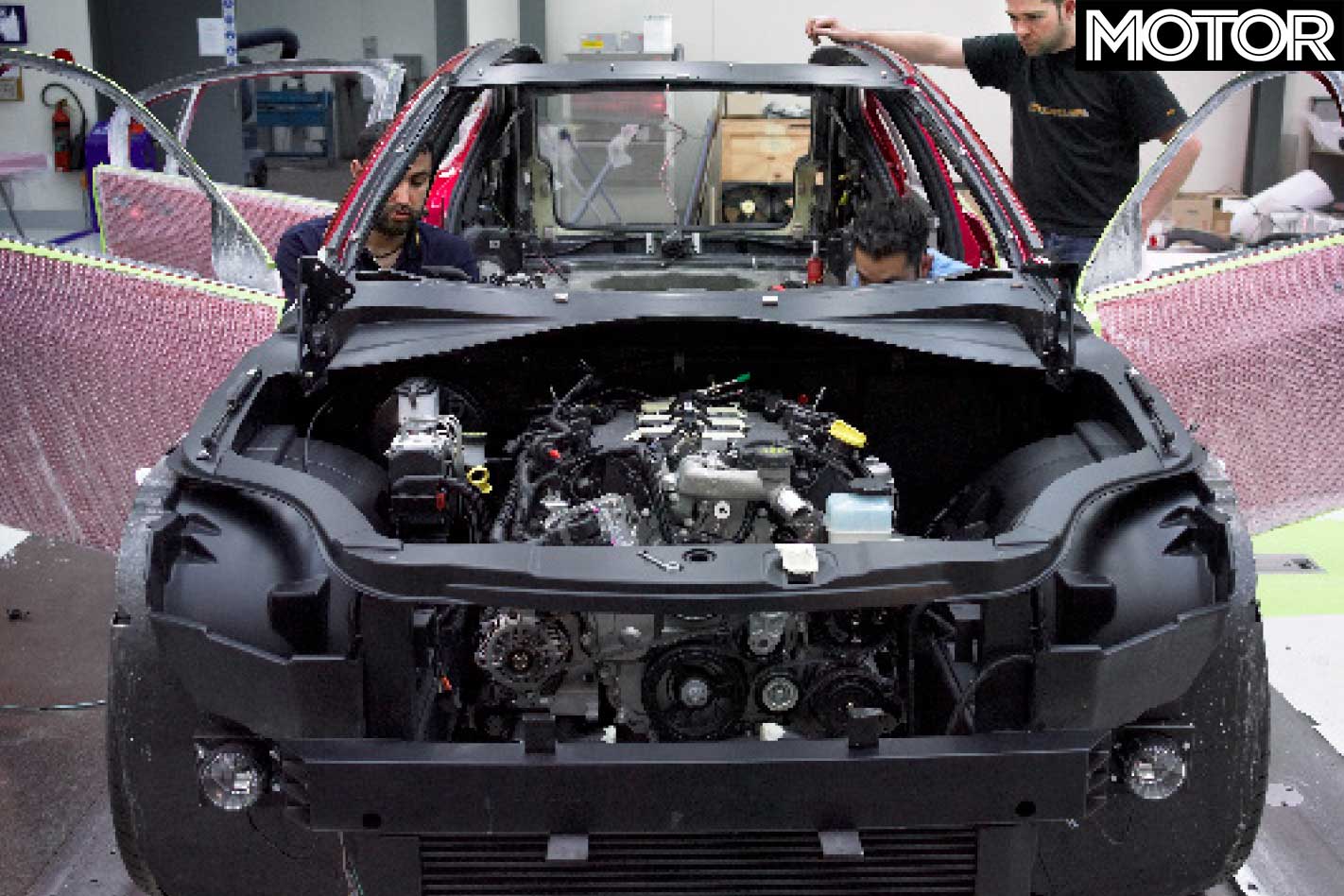
“It’s at the point where it could be sent off to engineering to finish,” Simcoe admitted at the time. He also cringed at the suggestion of using the Torana name: “We can’t design cars just for Australia. We’re competing with every GM design centre in the world, so it has to take on the best in the world and Torana is just too limiting. But we’ve now done all the packaging, now it’s their turn.”
By “their turn”, he meant getting the engineers to squash the V-car chassis inside it. But Lutz decided the Commodore’s running gear, especially its suspension components, were too heavy (even in VE-spec) for the prestige rear-driver he wanted to see.
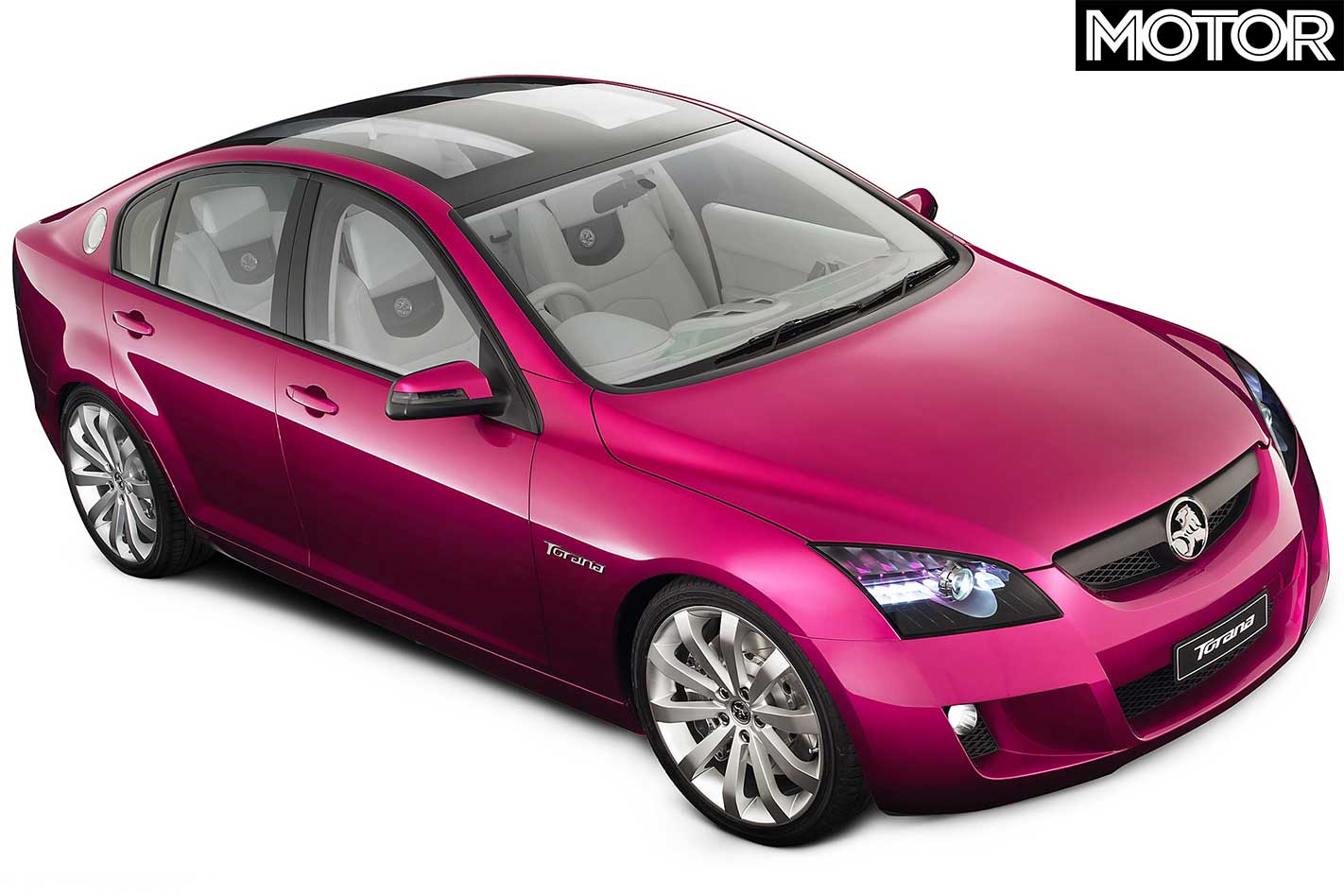
Simcoe’s replacement, Tony Stolfo, worked the clay model as well, before handing it on to SSX-designer Max Wolff. Kingsbury and Wolff finished off the project just days before the Sydney motor show. While the Torana’s proportions, and some of the details (including exterior door handles) look similar to the current Vectra, Kingsbury is quick to defend the project as original, insisting the devil is in the details.
The interior is dominated by a central spar running the length of the cabin, making the Torana a four-seater. Despite being 200mm shorter than a Commodore in overall length, the Torana boasts a wheelbase of 2845mm (2788mm for a VZ Commodore), giving excellent interior packaging. Holden claims interior dimensions similar to a BMW 5-Series but from a 3-Series-size body.
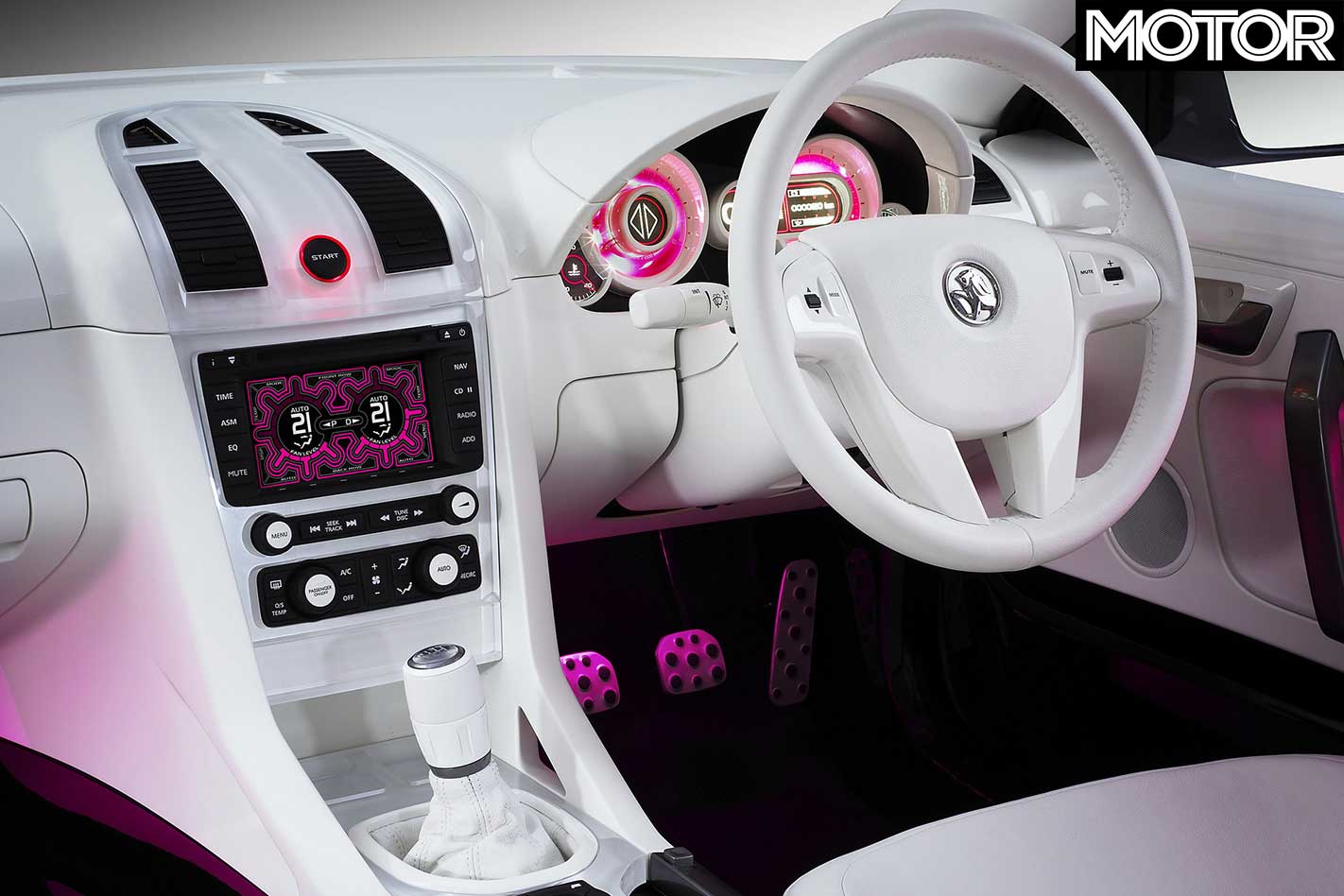
“Naming the concept was easy,” Holden chairman and managing director, Denny Mooney, reckoned. “We knew many fans [and the media] would immediately call it Torana because it is a high-powered, mid-size, rear-wheel drive hot hatch.”
According to Kingsbury, the Torana tag came very late in the project and, as such, it’s unfair to damn the TT36 just because it wears a famous name. Still, it draws few design cues from earlier Toranas. Sure, it has a hatch, like the Bathurst-winning A9X SSs of the late 1970s, but that’s where the similarities end.

More importantly, Stolfo said, the concept provides pointers to the direction of future design within the General’s empire and, specifically, the VE Commodore.
“It displays some of the key proportions we’ll see in future cars: front wheels forward, minimal overhang, high belt lines and a high deck. All these elements create strength and purpose and deliver expressive contemporary styling,” Stolfo said.
“The Torana TT36 may be simply for show… [but] it’s a first step in monitoring public reaction to a type of rear-wheel-drive vehicle that doesn’t exist in today’s General Motors portfolio. It could be designed and produced off a number of GM platforms.”
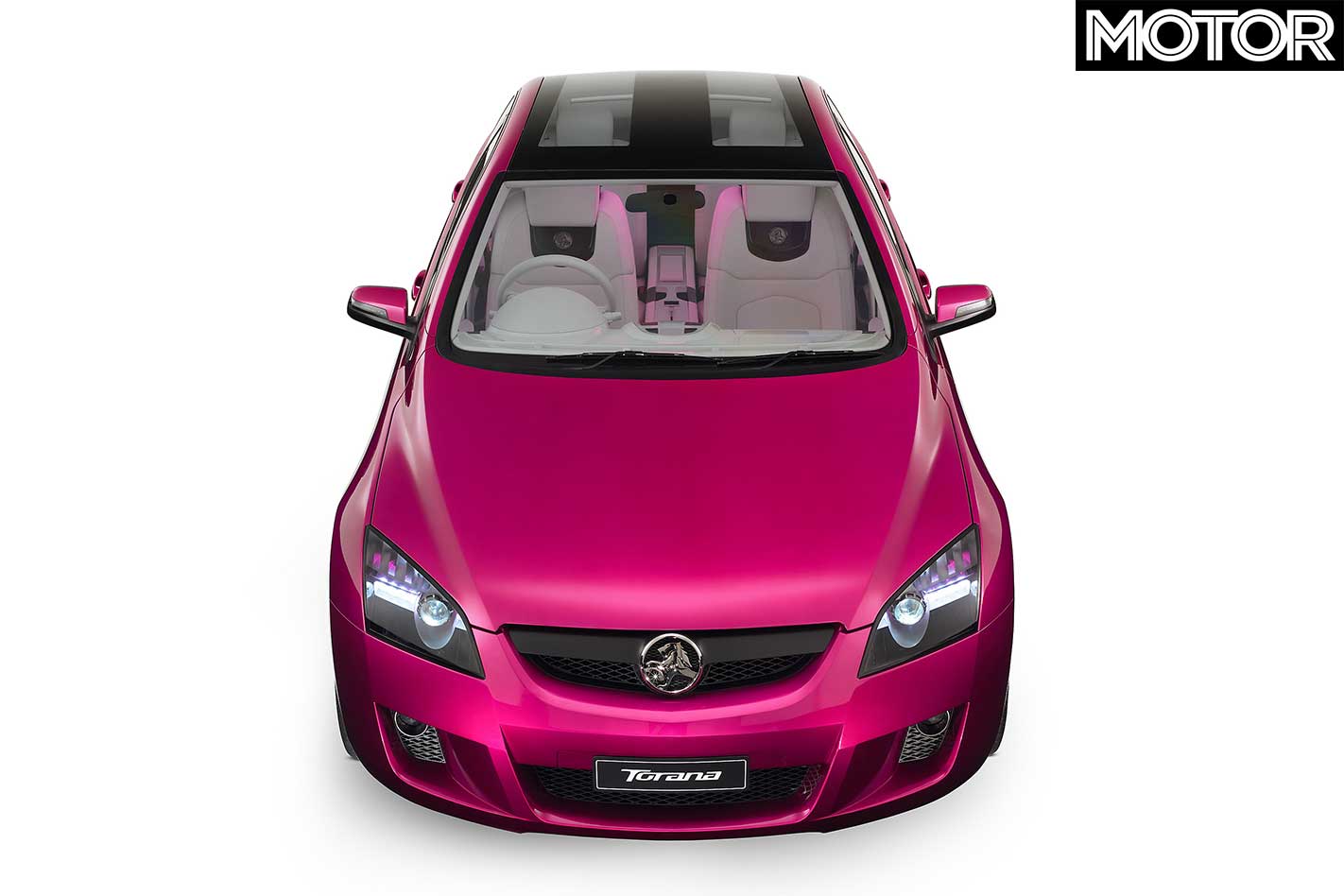
While Holden is keen to build it, the Torana TT36 concept car raises more questions than it answers. Some of them are easy, such as where it would be built. Others, such as why it would be built, are harder.
For starters, it’s not built on a Kappa chassis. The Kappa chassis was Lutz’s solution to the low-volume cost hurdle for small, rear-drive sports cars (like the Pontiac Solstice). It’s full of high-strength tubing (in GM-speak, a lower-dominant structure, which lends itself to disproportionately big interiors), but was designed to run longitudinal four-cylinder engines.
The Torana is not based on this chassis. How do we know? Well, Stolfo insists that Holden doesn’t have, and has never had, a Kappa chassis, in spite of being on the blag for one since September last year.
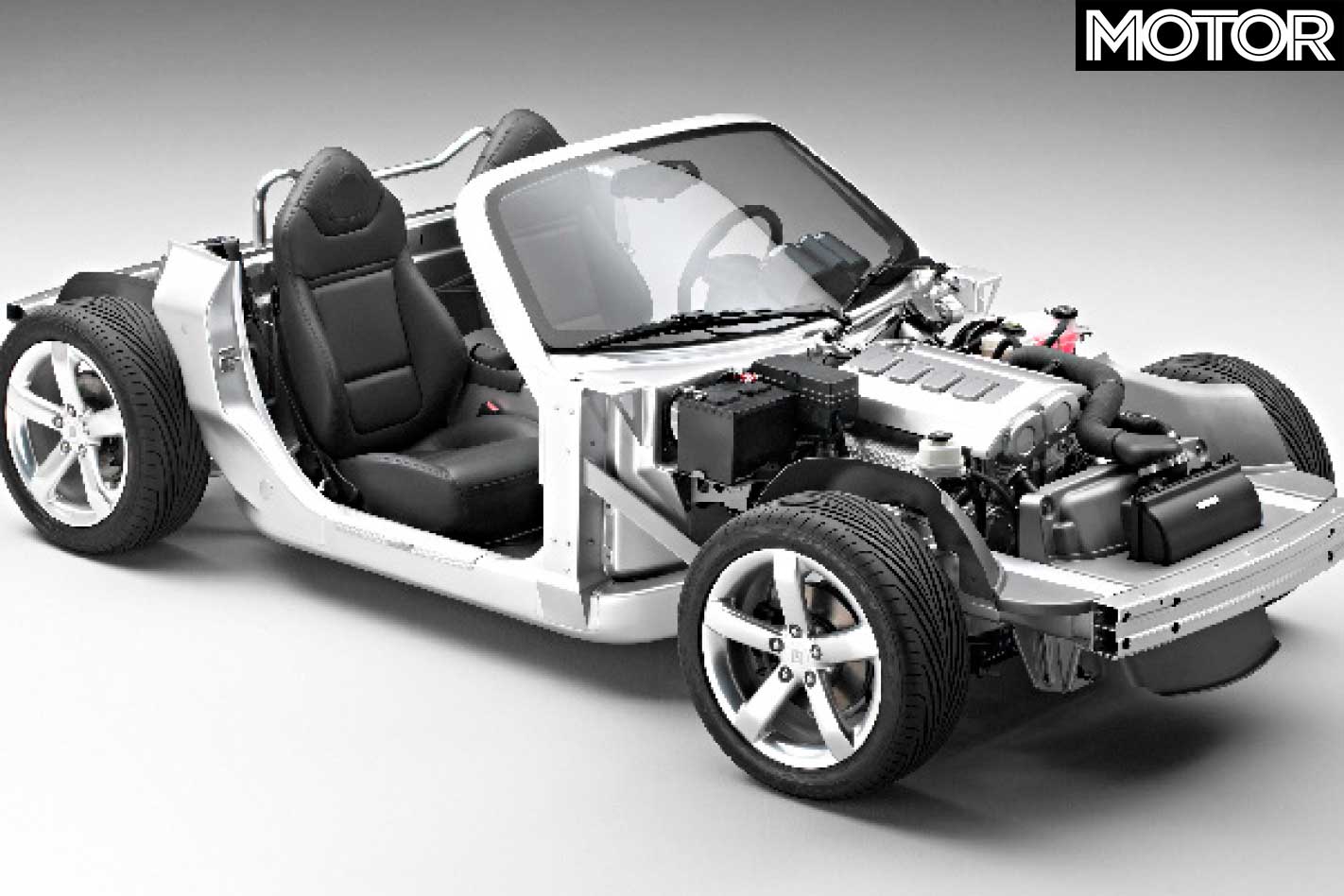
It is, instead, built around an all-new, Holden-designed version of a Kappa-philosophy chassis. With GM’s new globally integrated design wizardry, Holden checked the parameters, figured out the load paths and simply designed a universally embiggened one. It’s a lower-dominant structure of strong tubing and a stiff, double-walled driveshaft tunnel, complete with a full-length, fully enclosing panel for added strength.
Holden kept the cost down to $3.5 million by borrowing non-chassis bits from Kappa cars. The front and rear suspension (forged upper and lower control arms) in particular are straight out of the Pontiac Solstice, as are the pick-up points.
From there, the Torana gets different. Where the Solstice uses an Aisin five-speed manual, the Torana’s extra poke made it coax the T56 six-speeder out from behind Holden’s Gen III V8-motivated Commodores.
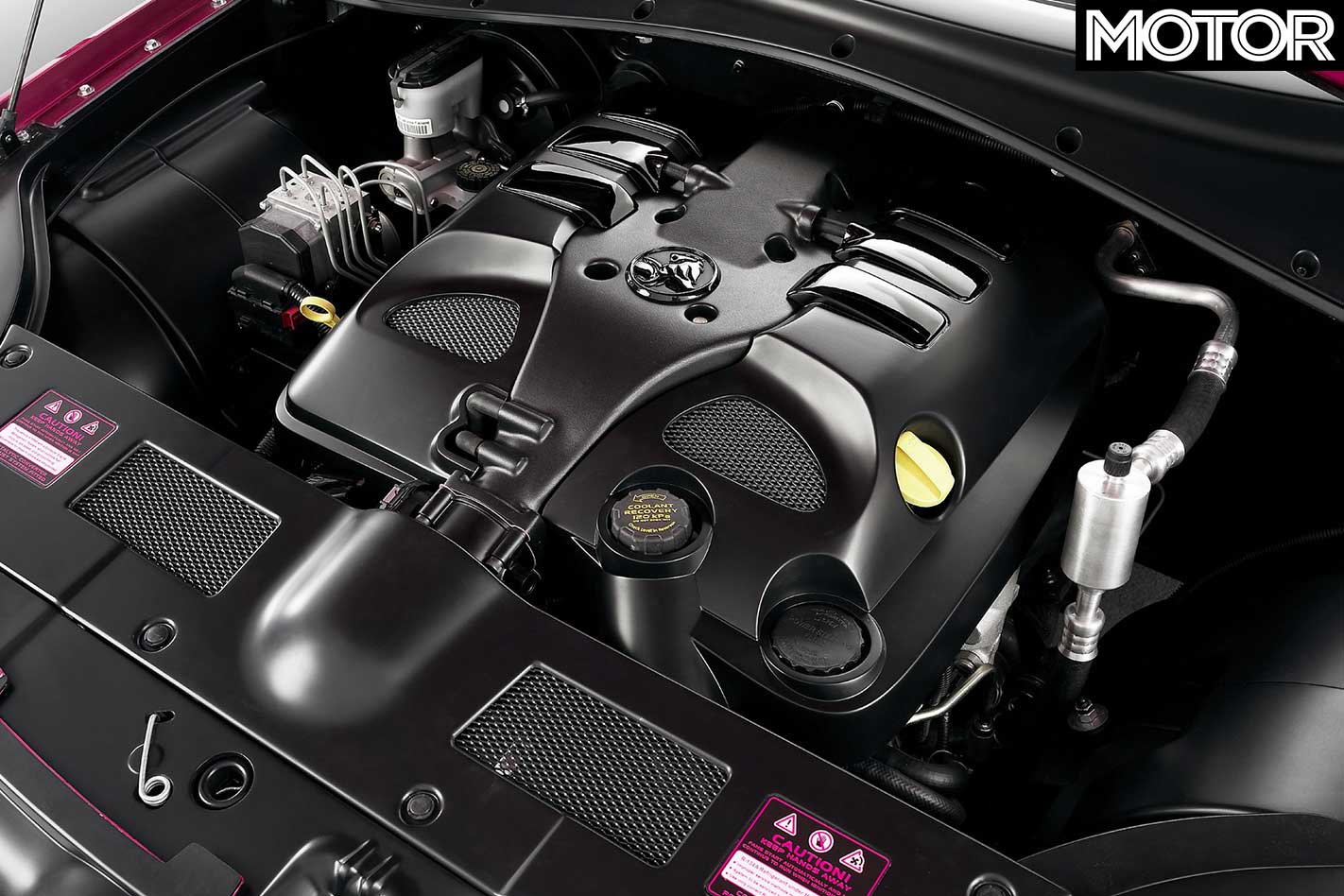
And that extra poke is probably the most production-assured bit of the Torana. While there will be protests about its hand-built nature and experimental status, a twin-turbo version was on the Alloytec HFV6 development timetable as far back as 2000. Holden claims 280kW tumbles out of the 3.6-litre V6, with 90 percent of its 480Nm maximum torque arriving at 1600rpm.
There’s a turbo for each bank and, surprisingly, not much else in the way of ancillaries under the bonnet. There have been suggestions that the LS1 and LS2 V8s could be shoehorned into the bay, but given the HFV6 vee angle is 60 degrees and the eights bend at 90, it’s unlikely. It’s also at odds with a rear-drive mid-sizer, aimed at the 3-Series BMW.
Even if green-lighted, it isn’t a production possibility before late 2007 (and will never be built on possible Australian sales alone), but it won’t be built here.
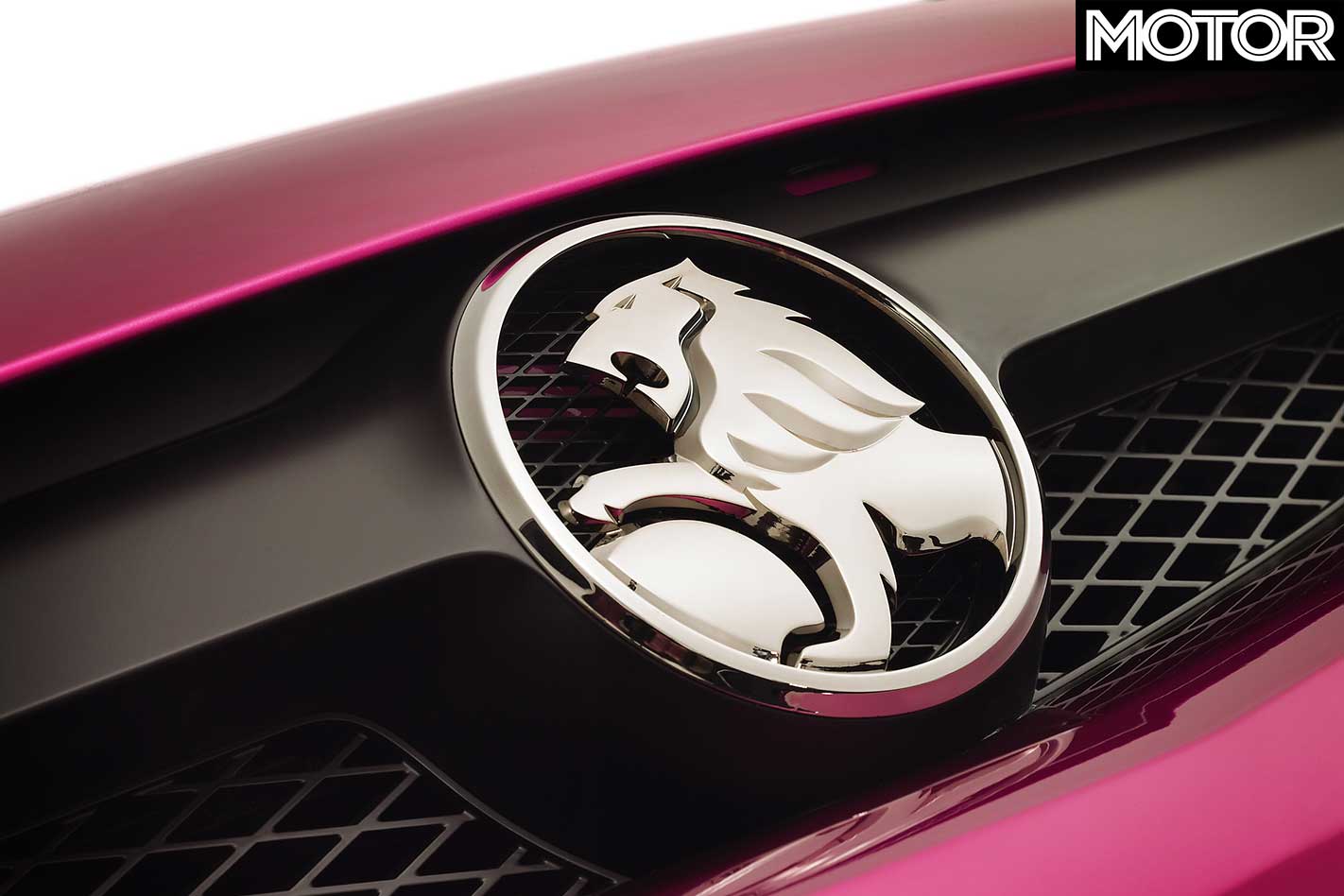
“It’s very easy for us to do because they’re hydroformed rails and they’re easy to change the stamping on,” Mooney insisted. “If we use existing suspension, it’s not that difficult to do.
“We need a competitor for the 3-Series. Cadillac CTS is a 5-Series competitor, and we need a small, premium performance sedan.”
If it’s built, the most likely place is Wilmington, Delaware, USA, at the underutilised plant specifically set up for Kappa architecture. After all, it would use the Solstice suspension components. But there’s another stumbling block. GM’s North American head of small cars, Lori Queen, isn’t a fan.
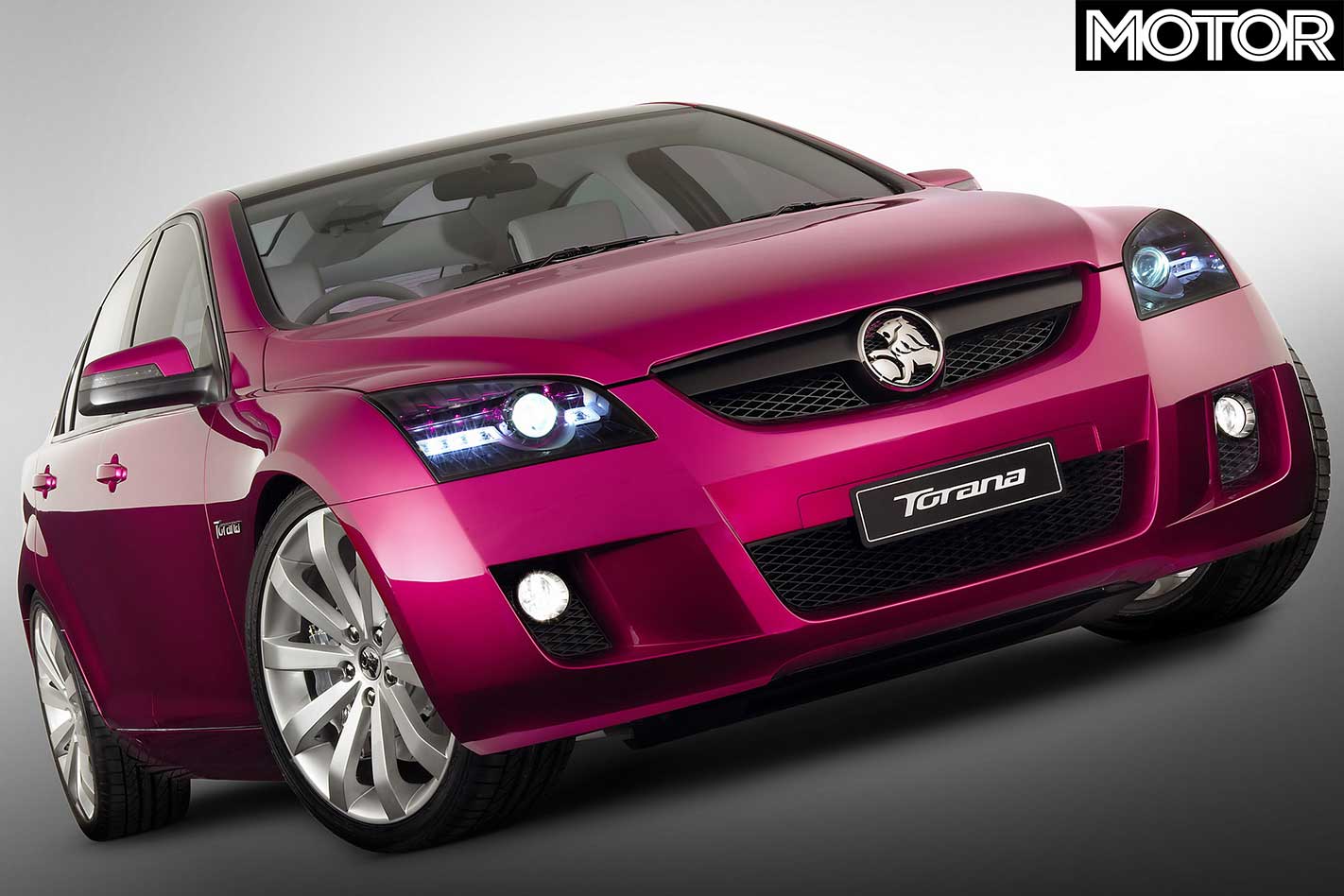
“If we put a premium on something like that, they (consumers) will just go to a bigger car, because they have so much choice here,” she confided at September’s Paris Motor Show. “We either have a really small car or a really big car. XP54 would have to be very low volume in its current guise and, for the US, it would not be a high priority.”
Mooney insists, however, that US growth markets have been in the south and south-west, where, without ice and snow, rear drive isn’t a problem.
It could also be argued that Europe, with its traditions of rear-drive performance cars, is a natural home for Torana, and the Asia-Pacific region’s buying habits are trending away from its traditional B-segment cars towards C- and CD-segment cars.
One source suggested its best chance will be lifted and front-diffed as GM’s mid-sized SUV. “The dimensions make more sense for that than a rear-drive Vectra,” one European source admitted. About all you can guarantee is it won’t be built by Australians, in Australia, for the Australian market. So it’s nothing like the old Torana, really.
Seen it before?
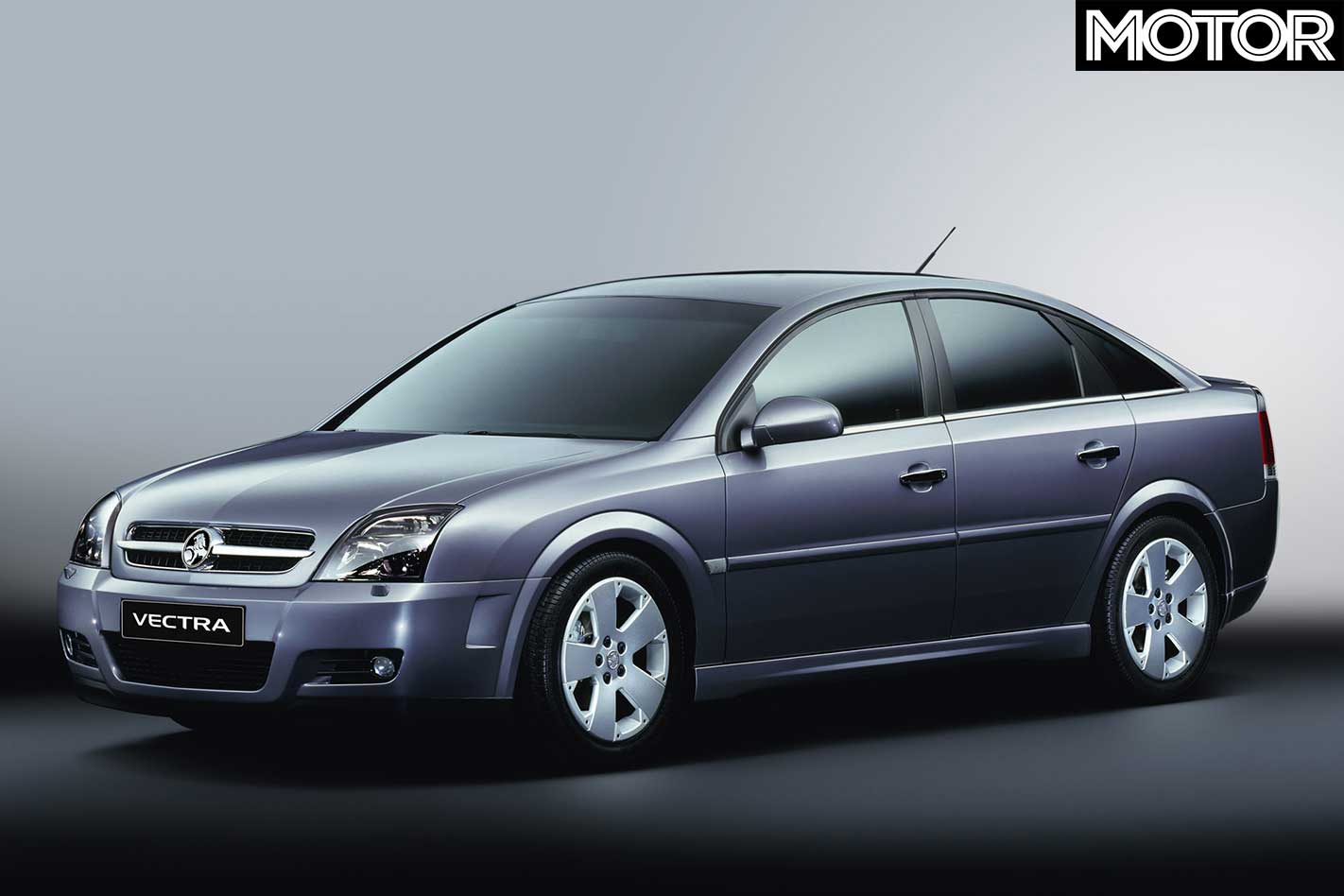
Funky pink paint and glow-in-the-dark interior aside, there’s something very familiar about the Torana TT36. And that’s because it’s pretty much the same size and shape as a current model Holden Vectra.
The OPC-kitted Vectra’s length/width/height measurements are 4596/1798/1460mm, where the Torana stretches the tape to 4653/1800/1474mm. The Torana’s track is 1542mm (f & r), up about 20mm over the Vectra – due mainly to the concept’s bigger 20×8-inch rims. The one area of difference is in wheelbase, with the Torana (2845mm) boasting a 145mm advantage over the Vectra.
The TT36 stole bits from…
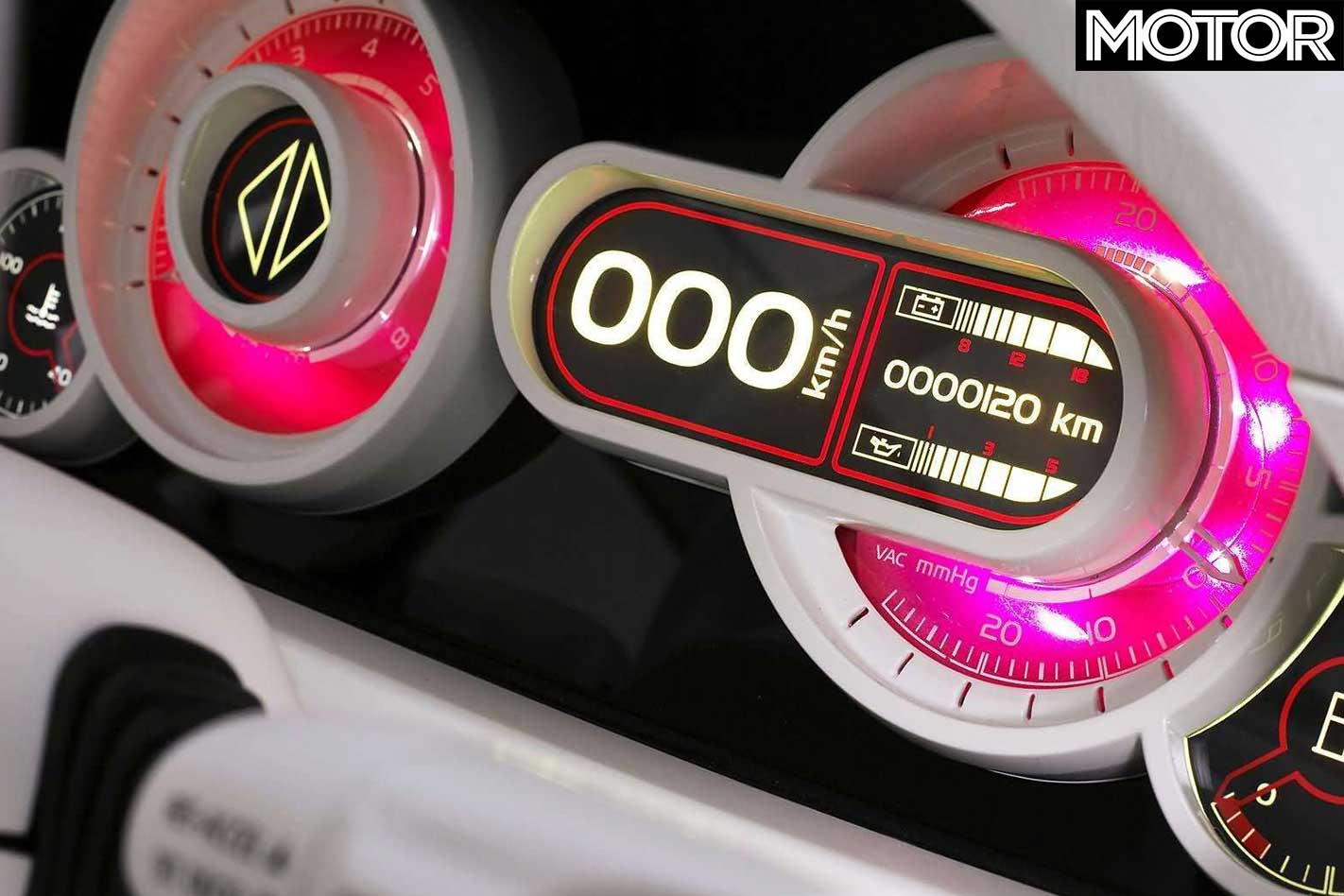
• Holden Commodore SS (six-speed gearbox) • Pontiac Solstice (front and rear suspension) • Holden Vectra (door handles) • Cadillac CTS/Commodore (engine block) • Barbie’s Babemobile (interior trim)

